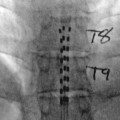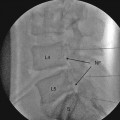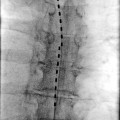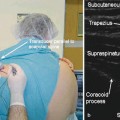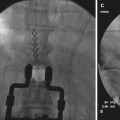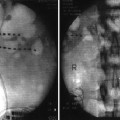© American Academy of Pain Medicine 2015
Timothy R. Deer, Michael S. Leong, Asokumar Buvanendran, Philip S. Kim and Sunil J. Panchal (eds.)Treatment of Chronic Pain by Interventional Approaches10.1007/978-1-4939-1824-9_1616. Transforaminal Epidural Steroid Injections
(1)
Advanced Pain Therapy, PLLC, 7125 Highway 98, Hattiesburg, MS 39402, USA
Key Points
Epidural steroid injections are a clinical and cost-effective method for treating acute and chronic spinal pain.
Transforaminal epidural injections are a more specific treatment than interlaminal epidural injections for radicular but not axial back pain.
Many pain medicine specialists believe that cervical transforaminal epidural injections are contraindicated given the relatively high-risk benefit ratio; extra training is necessary to complete these procedures safely.
Introduction
Epidural steroid injections (ESIs) play a fundamental role in the treatment of acute and chronic spinal pain and have shown clinical and cost-effectiveness. This is especially true when used in well-selected patients as part of a conservative, nonsurgical rehabilitative program. While the epidural space can be targeted by interlaminar, transforaminal, or caudal approaches, this chapter will focus on transforaminal epidural steroid injections (TFESI) including anatomic considerations, patient selection, technique, and outcome. Complications and risk mitigation will be covered elsewhere.
Anatomic Considerations
Knowledge of spinal anatomy, specifically the epidural space, is of significant importance when deciding upon which approach to utilize for an ESI. The epidural space lies between the osseoligamentous structures of the vertebral canal and the dural membrane shielding the contents of the thecal sac: cerebrospinal fluid, nerve roots, and spinal cord. While the thecal sac extends from the foramen magnum to approximately the S2 level, the epidural space extends to the level of the sacral hiatus at S4 or S5.
The epidural space contains adipose tissue, loose areolar tissue, arteries, lymphatics, and a rich venous plexus network. Contiguous with the thecal sac along its entire spinal course, the epidural space is anatomically divided into posterior and anterior compartments. The pain medicine specialist must fully appreciate the anatomy of the epidural space and how it relates to the ESI technique being considered. The posterior epidural space, typically accessed using an interlaminar approach, is bordered anteriorly by the thecal sac and posteriorly by the ligamentum flavum and the laminae. The anterior epidural space, most often accessed by a transforaminal approach, is bordered anteriorly by the vertebral body, intervertebral disc, and posterior longitudinal ligament and posteriorly by the thecal sac. The sacral epidural space may be accessed inferiorly by a caudal approach via the sacral hiatus. There are relative advantages of using one ESI approach over another depending upon the targeted pain generator, anatomic considerations (e.g., previous spinal surgery, decreased interlaminar space), and medical conditions (e.g., anticoagulation status). Interlaminar and caudal ESI approaches are discussed in other chapters. This chapter will focus on the transforaminal ESI techniques, benefits, cautions, and a review of the literature regarding efficacy over non-transforaminal ESI techniques.
A misperception is that transforaminal ESIs have greater diagnostic and therapeutic specificity than interlaminar ESIs. The relative diagnostic “specificity” of a transforaminal ESI corresponds to radicular pain only – not for axial back pain. A smaller volume of injectate, local anesthetic and corticosteroid, used in the transforaminal ESI approach may be more selective for one spinal nerve level. However, the injectate also affects several additional neural structures including the sinuvertebral nerve and dorsal primary ramus and its branches.
Stay updated, free articles. Join our Telegram channel

Full access? Get Clinical Tree


